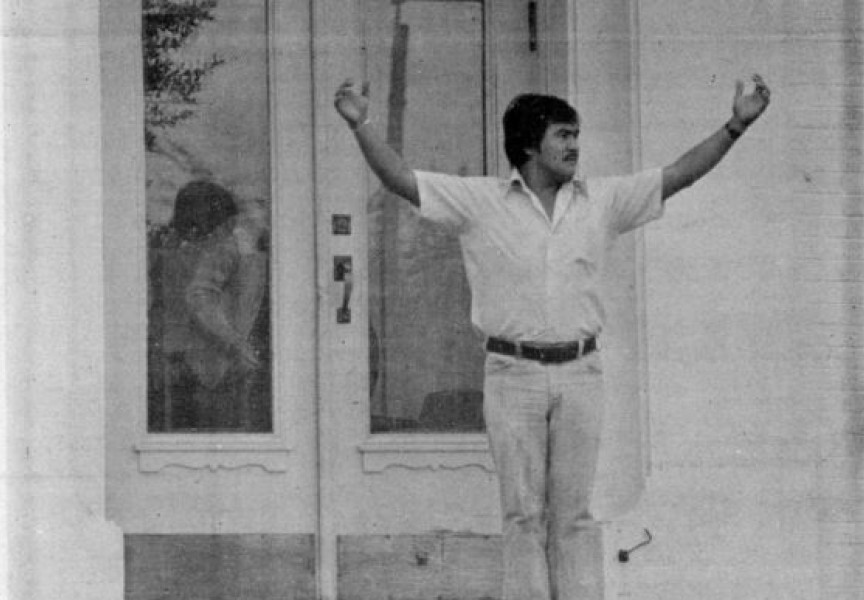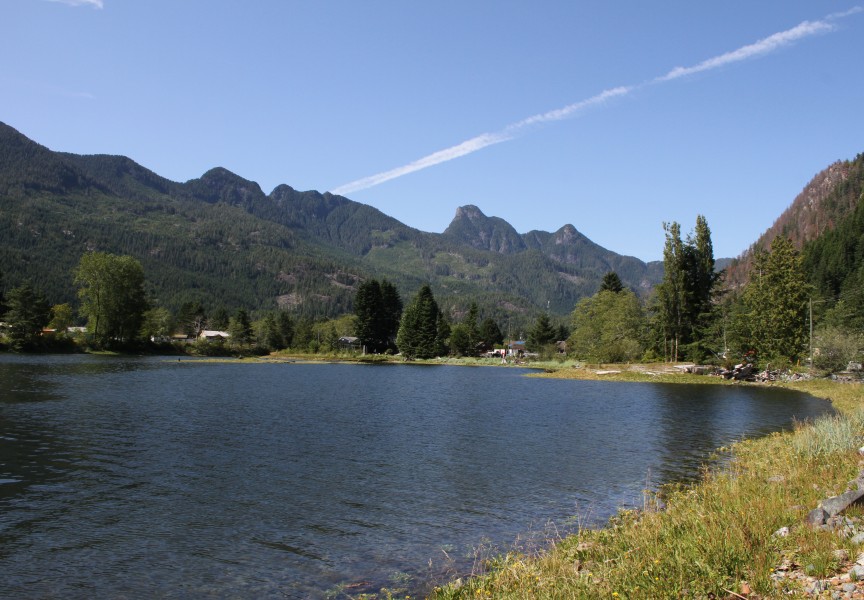With most of Vancouver Island under the BC Wildfire Service’s “extreme” danger rating, a lightning storm hit the north on Aug. 11, setting off a round of fires that would grow over the rest of the month.
Over the following weeks residents in Village of Zeballos and the nearby Ehattesaht reserve watched a wildfire on the mountainside over the community grow to 168 hectares. This led organizers to cancel the Northern Region Games, a Nuu-chah-nulth sporting event scheduled for Aug. 17-19 that was expected to draw as a many as 200 visitors to Zeballos.
Then on Aug. 18 the village issue an evacuation order for six properties on the east side of the settlement which were at risk of falling debris.
“YOU MUST LEAVE THE AREA IMMEDIATELY,” read the order, which advised residents to gather family and anyone else who needs help. “Close all windows and doors. Shut off all gas and electrical appliances, other than refrigerators and freezers.”
Over the first few days following the lightning storm, the provincial wildfire service was unable to get ground personnel on the steep slope, with suppression efforts limited to helicopters.
“It’s in very, very steep terrain,” said Dorothy Jacobson, a fire information officer with the Coastal Fire Centre. “We are struggling with a way of getting crews on the ground. We’re working on that.”
By the end of the first week ground crews did manage to position themselves on the slope, and by the end of August over 20 personnel, two helicopters and one piece of heavy equipment were on the scene. Support has come from a variety of agencies, including the BC Wildfire Service, the Zeballos Volunteer Fire Department, the Port McNeill Volunteer Fire Department and the Comox Fire Department’s Structural Protection Unit, plus crews from Khowutzun Forest Service and Ehatis Resources to help limit the spread of the wildfire.
Due to heavy smoke, visibility has been a challenge for air support, but on Aug. 23 an air tanker made two fire retardant drops near the south flank of the fire to prevent it from spreading onto hydro lines.
“There is good protection in place along the pole line. This fire was relatively quiet on Aug 24 and August 25,” stated the BC Wildfire Service in an update. “Crews continue to maintain and expand sprinkler systems to support structural protection, and patrol for any burning debris that may roll down the steep slopes into workable ground. This fire continues to burn away from the community. A heavy helicopter has been bucketing along the power lines.”
In an Aug. 25 update the Village of Zeballos noted that some recent rain in the region.
“Zeballos received about 3 millimetres of rain overnight, but the fire size and status remains unchanged,” stated the village. “On the North flank of the fire, crews completed the task of clearing a fire guard to tie into the river and successfully created a 100-foot wet line around the sea cans at the east side evacuation site. They will extend the sprinkler system for structure protection if needed.”
Meanwhile a much larger fire burned north of Zeballos, threatening to spread to the only road into the community. As of Aug. 27 the Pinder Creek fire had grown to an estimated 260 hectares since it was sparked by lightning on Aug. 11, starting 15.5 kilometres south of the Highway 19 turnoff. With 37 firefighters, two helicopters and three pieces of heavy equipment on the scene, the BC Wildfire Service assesses Pinder Creek to be 20 per cent contained.
“This fire has steep terrain on the back side of the fire. It is burning in slash and heavy timber,” stated the wildfire service. “Crews continue to remove trees along the road to strengthen the control line in that area. Firefighters are working to establish guards and are working with fallers and BC Hydro to keep the road open and protect the power line. A hose line is being established along the south guard. A guard is now in place on the north flank. Helicopters are supporting suppression with bucketing along the Forest Service Road.”
Periodic closures on the road to Zeballos continue while crews fall trees to control the fire’s spread.
Elsewhere in northern Nuu-chah-nulth territory, the Aug. 11 lightning storm sparked even larger fires. A blaze west of Espinosa Inlet has grown to an estimated 800 hectares, while the Artlish River fire burning west of Pinder Creek has reached 900 hectares. Further north another lightning-caused blaze by Tahsish Lake now encompasses 1,200 hectares.
But with the rest of the province under a state of emergency and multiple evacuation orders in effect, resources will be focused on fires that immediately threaten human settlements, said Jacobson of the remote northern incidents.
“They’re burning very remotely and we are prioritizing those that might affect people, property or infrastructure,” she said.
Over the last weekend of August parts of Vancouver Island received some rain, leaving a situation that residents hope will slow the future spread of the wildfires. This lowered the north island’s danger rating to “moderate”, while areas of the central and south island range from “moderate” to “high”.







